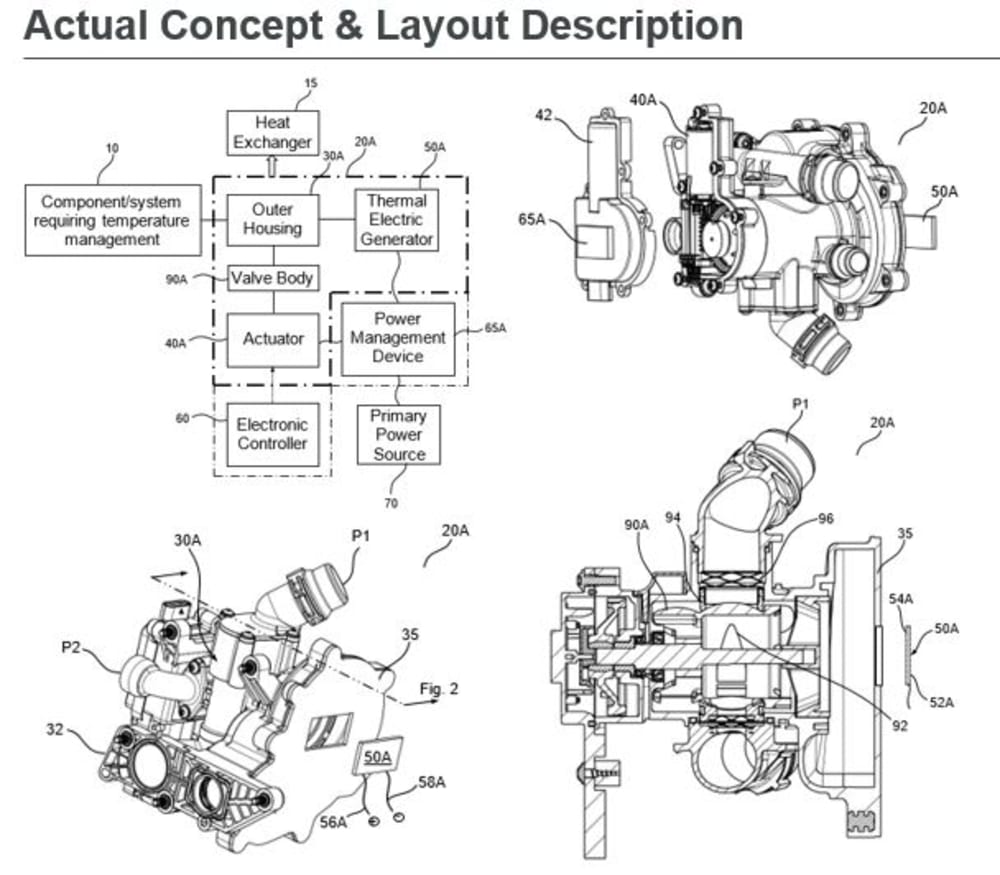Background:
Presently, all the coolant control valves (CCV) are used on engine/vehicle applications to precisely control the coolant flow, by using electric actuators. These actuators require electric energy as an input during continuous operation. Thermoelectric technology is used to utilize the temperature differential between the coolant temperature inside the coolant control valve and external temperature and generate electric power for the actuator operation as required.
Currently, the CCV technology only contains mechanically driven fail-safe technology when the vehicle loses its power. In order to avoid the mechanically driven fail-safe system, a thermoelectric generator can be used instead for actuation of the CCV.
State of the Art:
The core function of the coolant control valve (CCV) is to allow accurate temperature control within the coolant circuit in automotive powertrain systems. To this end, a significant amount of power is consumed in order to keep the actuator constantly rotating. This power draw is even more exacerbated during the initial warming phase of the CCV, due to inherent frictional effects of the internal components as well as coolant viscosity. With the onset of more electrified powertrains, this will yield a direct reduction of vehicle range.
In an effort to mitigate this issue between prioritizing vehicle thermal management versus vehicle travel range, this invention is proposed. Through this new add-on to the CCV, the waste energy from the CCV lost to the environment can be harvested and used for partial/full actuation of the CCV.
The electric power generated through the thermoelectric generator can be used to reduce the power consumption from the vehicle.
Another application will be as a fail-safe mechanism to safely the valve to desired position in the event that the CCV loses power from the vehicle.
Technical Problem:
The technical problem solved by this invention is the excessive power consumption of the coolant control valve during actuation across the operating temperature range, which will result in increased electrical load on the vehicle. Loss of electrical connection between CCV and vehicle power source during engine/vehicle running condition, which will result in vehicle malfunction.
Solution:
Thermoelectric Generator is integrated within CCV which will generate electrical energy that will be used for CCV actuator operation. Thermoelectric Generator is used, in conjunction with the temperature differential, to generate the electrical energy - this solution will be used for fail-safe operation of the actuator in order to protect the vehicle and CCV.
For Electric Vehicles this will be great energy saving device as there will be significant reduction in electrical power consumption for actuation the Valves & excess energy will be send back to any storage device or consumed to other power devices.
Video
Like this entry?
-
About the Entrant
- Name:Raghunath Paralkar
- Type of entry:individual
- Patent status:patented

